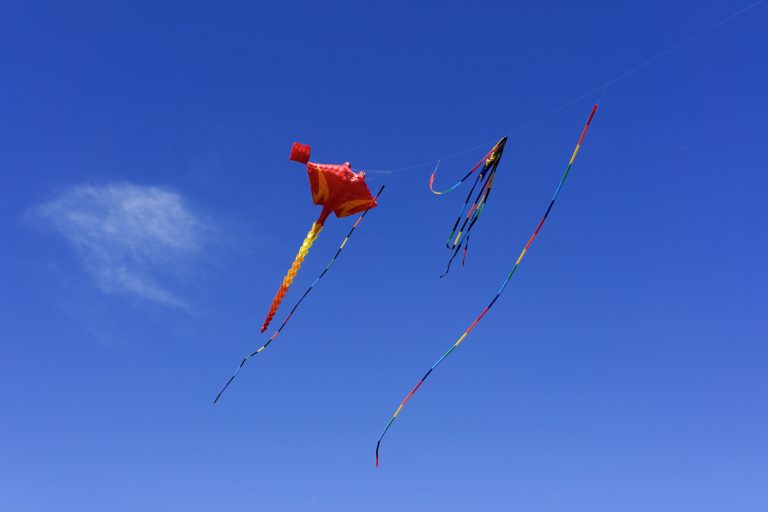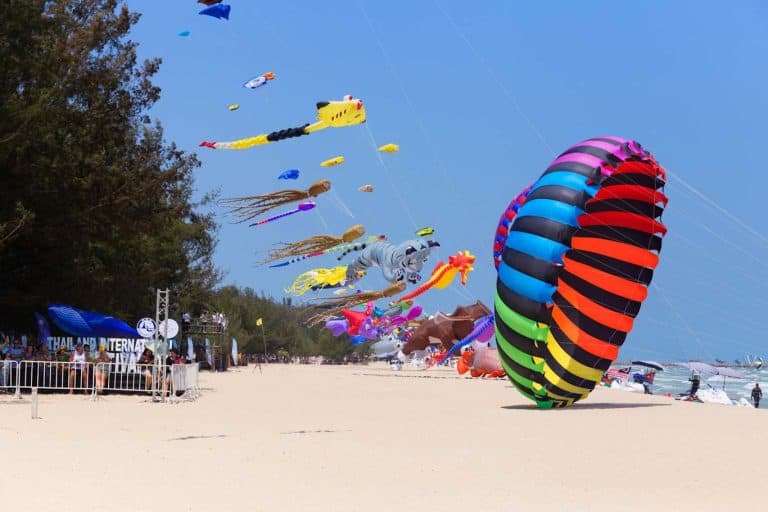5 Things To Look For When Choosing A Kite For Yourself
Maybe it is the first time you have considered buying a kite, and you are unsure which is the best purchase. Since there are many choices, it depends on what you will use a kite for and your style.
The most important factor when choosing a kite is the wind. People who fly their kites in high wind areas will most likely choose a smaller kite, while those who choose to fly in low winds will generally go with a larger kite or an ultra-light kite.
Whether you are looking for a simple kite to have some fun or a more complex model to do sport, in this article, we are listing some of the most essential things to consider when choosing a kite.
How Do I Choose a Kite?
Each kite is produced to fly in different wind conditions. In addition, kites producers build kites in different sizes and shapes to provide the customer with the best options for what they want to do. For example, should you have a fast kite? A stable one? Or a big-size kite?
A single kite line is not indicated for those who want to do kite surfing, or otherwise, those who wish to do stunt kite flying would not get a power kite.
Here are essential factors to consider in getting your new kite:
Stability
Stability is crucial in choosing a good kite. If you have a stable kite, you can keep flying it even if there is more wind than usual, without bending or bowing. However, unstable kites can be twitchy and may require additional skills on the operator’s side. Therefore, beginners should use stable kites.
Delta kites are an excellent example of stability because they do not pull on the kite line too much and tend to fly almost parallel to the wind flow.
This kite provides a low angle of attack, allowing it higher stability in higher winds with less pull on the kite line. Even kids can be confident in using delta kites.
Diamond kites are also very popular amongst kids and inexperienced people for their stability and ease of use.
On the other hand, a non-common kite, such as the rokkakus, is considered a stable and reliable kite suitable for advanced users who wish stability.
Wind Range
Kites have a wind range, which is the wind they can withstand when flying. Therefore, wind speed is an essential factor to consider when choosing a kite. For example, if a kite has a wind range of 10-50 kph, it means that below it, or above it, it has low chances to stay in the air.
Some kites can fly with a reduced wind range and have a specific size to facilitate the performance in those circumstances.
However, if a kite tries to fly in winds above its recommended range, it will fly faster and be challenging to control.
In addition, a wind above range can break the kite fabric, stitches, framing, and lines because the kite was not built to resist those high forces.
Turn Radius
Kites can turn with a large or narrow radius depending on their designs, wingtip shape, and size. Some kites do not take a lot of space to turn. Typically, kites that can turn close to their center have a short turn radius. In order to do this, a lot depends on the shape and material of the kite.
However, a narrowed turn radius generates less pull and less power. Therefore, people who want to fly a kite that produces a specific power have to choose the right design, amongst other things. In general, a kite’s wide or narrow radius depends on its wingtip shape and the overall design.
On the other side, kites with a wide turn radius generate a lot more power when they turn. It is possible because of their wide wingtips or a C canopy shape. Those choosing such a kite have to know that they need more energy and the ability to maneuver it and keep it in the air.
Responsiveness
Some kites are easier to maneuver, while others require additional skills. But, a kite is responsive when it reacts quickly to the operator’s commands. You can find high responsiveness in advanced and more sophisticated kites that can be used for wave riding or kite loops. Those are the ones that an experienced rider would use.
Beginners would have a better experience using a low responsive kite or, in any case, a slow one because they need time to think and understand what is happening and what to do next. Since kites can have different wingtips attachments that provide extra responsiveness, anyone can decide the preferred level depending on the skills.
For example, a delta kite with a permanently attached tail is not responsive but can fly in almost all weather conditions. Therefore, kids and beginners can enjoy them even if not exceptionally skilled. In addition, they can have amusing designs to make kite flying more enjoyable.
Single Or Dual-Line Kite
Single-line kites and dual-line kites are different in many ways. Those looking for something straightforward to fly should choose a single line kite, which you can make in various shapes such as delta, butterfly, classic triangle, octopus, biplane, or even in the form of a box.
Even more complex single-line kites are relatively easy to fly and require minimal effort. One could think that those kites are only for children.
In fact, it is possible to find exotic and sophisticated kites like the Aerostar, Cody, or a boxed kite, all of which are single lines.
A single-line kite can be used by those who want to have fun but do not want to put a lot of effort into flying it. One can sit at the beach and attach them to an anchor, requiring minimal supervision.
Dual or multi-line kites have to be supervised and flown actively at all times. It takes a little more skills to control it, and there is a learning curve at the beginning.
In addition, with more practice, a person can learn to kite flips, tricks, fly formations and patterns, and do other acrobatic maneuvers.
What Kite Should You Buy?
There is no best kite or perfect kite you can buy. Each kite can be the best for what they can do and what they were built. So whether one is flying a dual line or a single line kite, a C-shaped, a large size kite, or other, if it is suited to your needs and you feel comfortable, that is the best kite for you.
Some people like to buy and fly fast and sophisticated kites, others like to do stunts, and others want to have their kids enjoying a colorful and straightforward kite. Unfortunately, it means that those who love kites may need to buy more than one.
Typically, two kites are indicated for low and high winds. One can decide to purchase sophisticated kites to do sport.
It is good to have two or three kites for different activities. People can buy the same model but in different sizes to meet various wind conditions. Ultimately, one of the main deciding factors in purchasing a kite is the wind ( or wind range) you need.
For example, a good rule of thumb is to choose a kite size based on the wind one is expecting. The stronger is the wind, and the smaller should be the kite.






